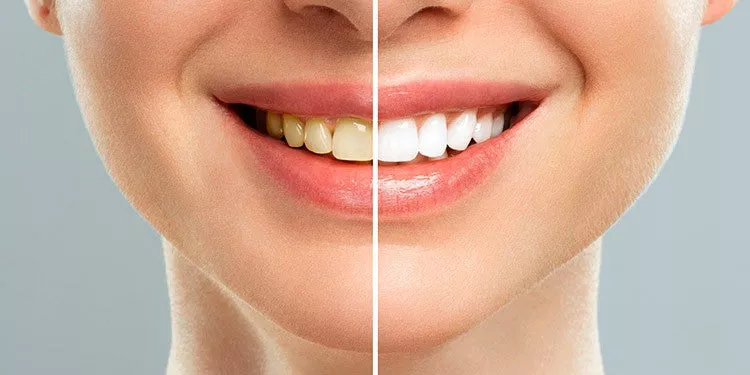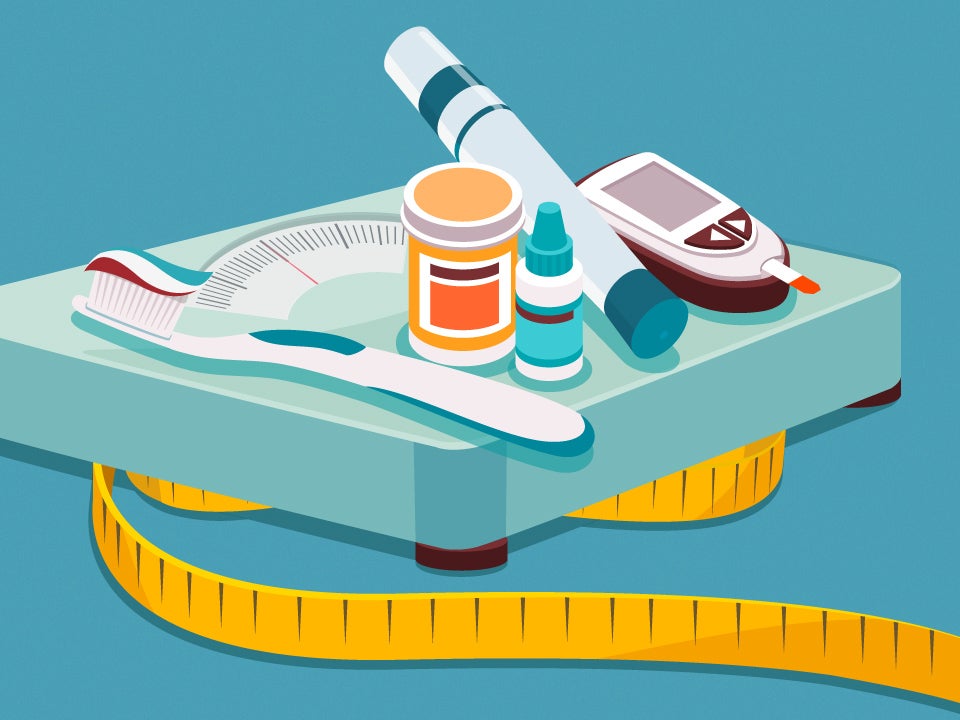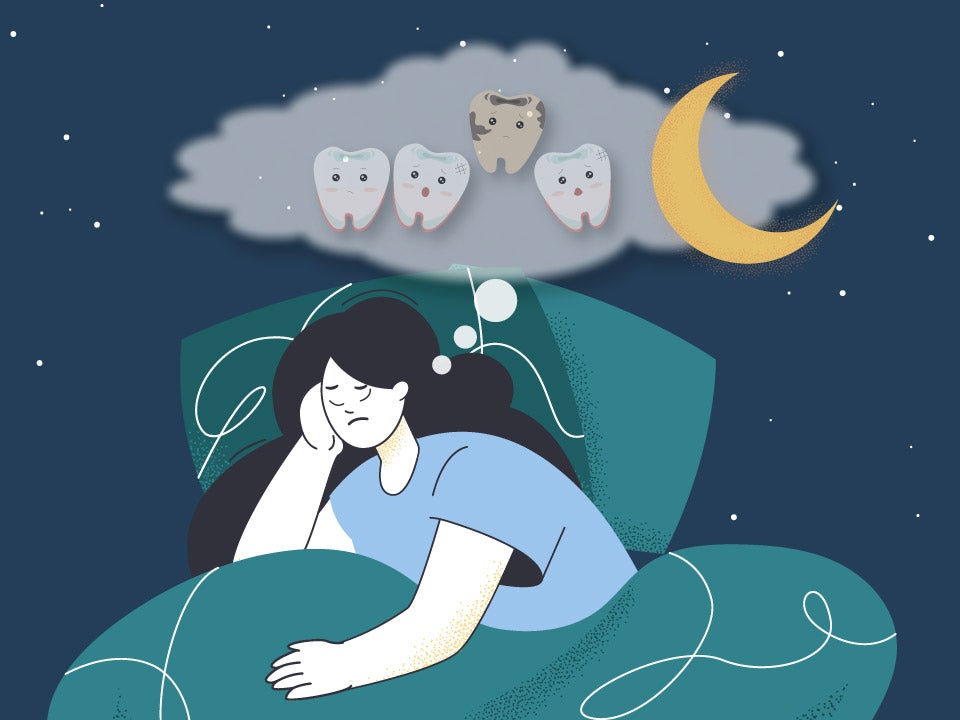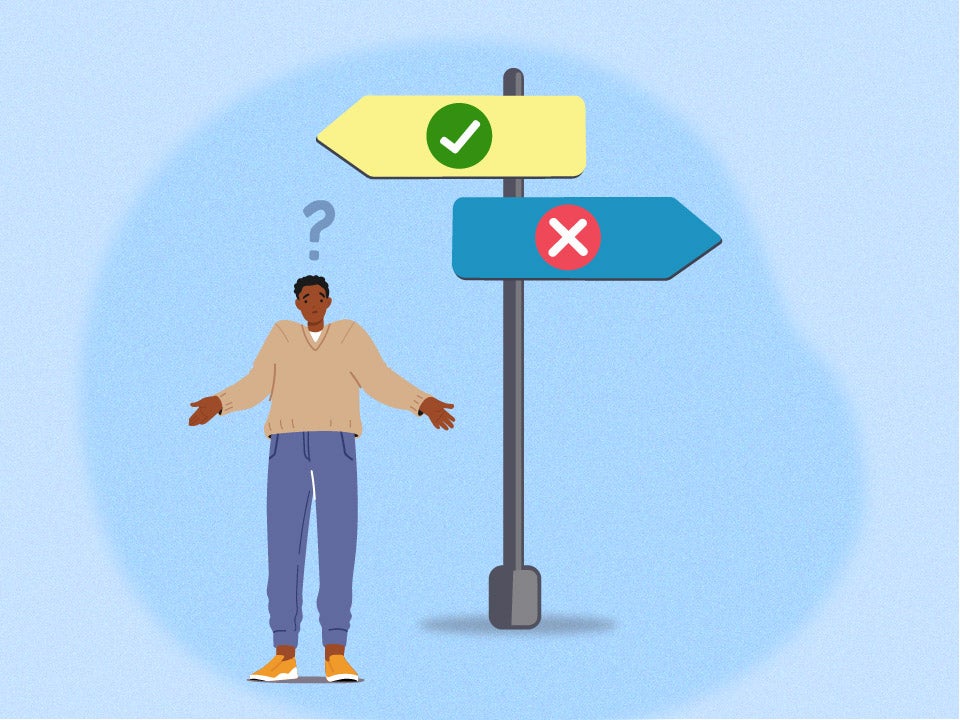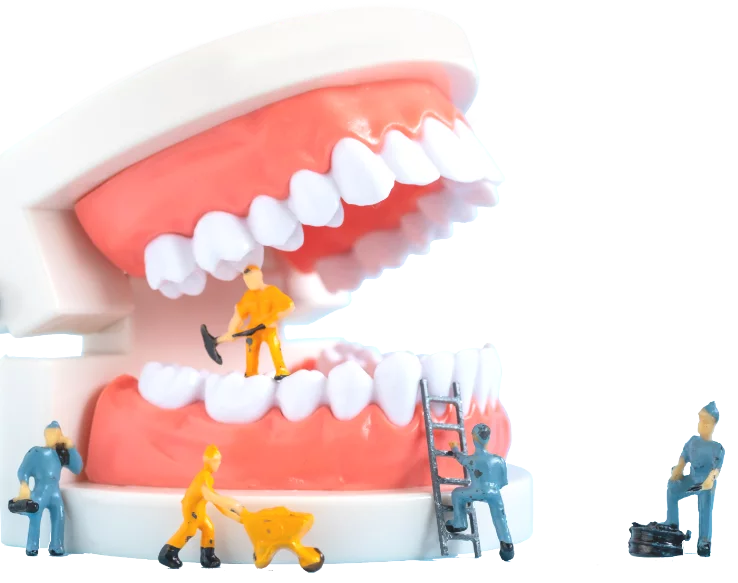Blog Summary: Wondering Why Your Teeth Look Yellow? Discover what causes tooth discoloration—from everyday habits to natural enamel changes—and learn simple prevention tips and professional treatments to keep your smile bright.
Why Are My Teeth Yellow?
Over time, the enamel on your teeth will gradually wear down due to the effects of acidic foods and beverages, hard brushing, issues such as teeth grinding or GERD, and the normal aging process we all experience. Dentin, which is the layer underneath the enamel, is a yellowish-brown color; as the enamel is eroded over the course of life, more dentin shows through at the surface. In this respect, it is normal to have yellow teeth – especially as you age.
Why Are My Teeth Yellow When I Brush them Every Day?
Good oral hygiene is extremely important; however, just because you are a superstar when it comes to brushing doesn’t mean your teeth will be white. In fact, brushing too hard with certain strokes can actually wear away the enamel and lead to yellowing. The fact is, there are many factors outside of good brushing habits that can cause teeth to be yellow, so stay the course when it comes to keeping your teeth clean. Brush thoroughly and properly with the right toothbrush and consult your dentist if you have persistent yellowing that worsens over time.
What Causes Yellow Teeth?
There are many reasons you might have yellow teeth:
- Staining
- Aggressive Brushing
- Poor Oral Hygiene
- Tobacco Use
- Genetics
- Aging
Staining
There are different types of staining to consider when it comes to your teeth. Stains can be intrinsic, meaning below the enamel, or extrinsic, meaning stains that are on the surface of the enamel itself.
Extrinsic stains are often caused by food and drinks that are highly likely to stain the teeth, such as coffee, red wine, berries, and tomatoes. Choosing food and drinks carefully, considering their effect on your teeth, can greatly reduce the amount of staining. Extrinsic stains are generally easier to control and easier to treat once they’re set in place.
Intrinsic stains are a little tougher to combat, as the stains are located below the enamel in the interior parts of the teeth. Intrinsic stains can be caused by excessive fluoride use, trauma, medical treatments, or even antibiotics. While they are more difficult to remove than extrinsic stains, a capable dentist will know just how to get rid of those persistent deep-level stains so your teeth can be pearly-white once again.
Find a Dentist Near You
Aggressive Teeth Brushing
It’s great to have a passion for good oral hygiene and brush thoroughly to fight bacteria buildup that can lead to plaque and tartar. But be careful that you don’t get too excited and brush with a heavy hand, particularly in a rough side-to-side motion - brushing too hard (especially with a toothbrush that has hard bristles) can wear away the enamel, causing those yellowish lower layers of dentin to be more apparent at the surface. You might feel like your teeth are getting cleaned, but the result over time could be a significant yellowing of the teeth.
Poor Oral Hygiene
Poor oral hygiene can lead to a plethora of problems, including yellowing of the teeth. Proper brushing and flossing coupled with regular dental exams are of paramount importance in removing plaque-causing bacteria and substances on the teeth that might lead to stains.
Tobacco Use
It’s no secret that tobacco use is extremely harmful to your overall and oral health. Not only does it lead to an array of diseases, but it wreaks havoc on your teeth. When nicotine reacts with oxygen, it takes on a yellowish or even brown color that creates stains.
Genetics
Everyone is unique in their genetic makeup, and some people are genetically predisposed to have thicker, whiter enamel than others. On the contrary, some family lines tend to have dull or yellowed teeth from generation to generation.
The Aging Process
Aging is inevitable. We may try to avoid it, cover it up, or pretend it’s not happening – but it’s definitely happening. Yellowing teeth is a natural part of the aging process. Enamel is worn down over the years from food, drinks, and a variety of other factors that all take a toll on your teeth, leaving the dentin to show through with its dull, yellow tint.
How to Get Rid of Yellow Teeth
To get rid of yellow teeth, patients can consider:
- professional dental whitening
- dental veneers
- natural, at-home treatments
Professional Dental Whitening
Dentists who practice cosmetic dentistry usually offer professional in-office whitening treatments. Professional whitening is more potent and can reach deeper stains than over-the-counter options or most home remedies. The treatment typically takes about an hour and involves a dental exam as well as making sure the teeth are properly cleaned and prepped for the process. Your dentist will show you various levels of whiteness to choose from, so you can pick a shade that will feel natural and comfortable for you.
Get Professional Teeth Whitening
Dental Veneers
Veneers are a great option for a smile makeover, especially when you have stubborn intrinsic stains. There are different types of veneers with various methods of application. Still, all have the same general result – they act as a sort of shell that covers the teeth, which allows you to choose the shade of white for a uniform look that will cover any discoloration present.
How to Whiten Teeth at Home
There is no shortage of options when it comes to at-home whitening kits that can be purchased over the counter. These treatments are generally most effective on surface stains from that daily coffee habit or your deep love of chocolate-covered strawberries. Be cautious when using at-home whitening kits, as some can lead to increased sensitivity over time.
Natural Whitening Remedies
There are plenty of options that offer a natural approach to teeth whitening, such as:
- Coconut oil pulling
- Applying a paste made of one tablespoon baking soda and two tablespoons hydrogen peroxide directly to the teeth, or choosing a toothpaste that has those ingredients
- Using an activated charcoal toothpaste
- Decreasing consumption of food and drinks that stain teeth
In Conclusion:
- Yellow teeth can result from surface stains, enamel thinning, or deeper intrinsic discoloration.
- Everyday habits—like coffee, tea, wine, and smoking—are common contributors to staining.
- Consistent brushing, flossing, and routine dental cleanings help prevent yellowing.
- Professional whitening and other dental treatments can safely restore your teeth’s natural brightness.
- If discoloration affects one tooth or worsens suddenly, schedule a dental evaluation.
Find a Cosmetic Dentist Near You to Whiten Your Teeth
It can be extremely frustrating to feel like you’re doing everything possible to practice good oral hygiene and still suffer from yellowing teeth. If you’ve tried at-home and natural remedies to no avail, it may be time to reach out to a cosmetic dentist to find out how to make your teeth white. A dental professional will know just what to look for to determine the cause of yellowing teeth and what the most effective solution will be, whether that means professional whitening treatments or even veneers.
If you’re new in town and asking where to find a dentist near me or just looking for a fresh start with a highly qualified, capable professional, check out the Smile Generation Find a Dentist tool to connect with a cosmetic dentist in your area.
Find your trusted, local dentist today!
Yellow Teeth FAQs
Yellow teeth can result from surface stains or changes beneath the enamel. Common causes include foods and drinks like coffee, tea, or wine, smoking, poor dental hygiene, aging, and certain medications.
Yes. Professional whitening treatments and regular dental cleanings can effectively remove stains and restore a brighter, whiter smile.
You can prevent yellowing by brushing and flossing daily, avoiding stain-causing foods and drinks, quitting smoking, and keeping up with regular dental checkups and cleanings.
Yes. Dentists can remove surface stains through professional cleanings or whitening treatments, and they can treat deeper, intrinsic stains with other restorative options.
Sources
- Colgate. (2023). Ten causes of yellow teeth and how to avoid them. Colgate. https://www.colgate.com/en-us/oral-health/adult-oral-care/ten-causes-of-yellow-teeth-and-how-to-avoid-them (Accessed October 8th, 2025).
- Medical News Today. (2019, October 8). What causes yellow teeth and how to fix them. Medical News Today. https://www.medicalnewstoday.com/articles/321172#dental-remedies (Accessed October 8th, 2025)
- Colgate. (2024). Teeth stain removal: Types, tips, and options. Colgate. https://www.colgate.com/en-us/oral-health/teeth-whitening/teeth-stain-removal-types (Accessed October 8th, 2025).
- American Dental Association. (n.d.). Whitening. American Dental Association. https://www.ada.org/resources/ada-library/oral-health-topics/whitening/ (Accessed October 8th, 2025)
- Crest. (n.d.). Teeth stains: Causes, types, and how to remove them. Crest. https://crest.com/en-us/oral-care-tips/teeth-stains/teeth-stains-causes-types-how-remove-teeth-stains (Accessed October 8th, 2025)
- WebMD. (n.d.). Tooth discoloration: Causes, prevention, and treatment. WebMD. https://www.webmd.com/oral-health/tooth-discoloration (Accessed October 8th, 2025)
Smile Generation blog articles are reviewed by a licensed dental professional before publishing. However, we present this information for educational purposes only with the intent to promote readers’ understanding of oral health and oral healthcare treatment options and technology. We do not intend for our blog content to substitute for professional dental care and clinical advice, diagnosis, or treatment planning provided by a licensed dental professional. Smile Generation always recommends seeking the advice of a dentist, physician, or other licensed healthcare professional for a dental or medical condition or treatment.


